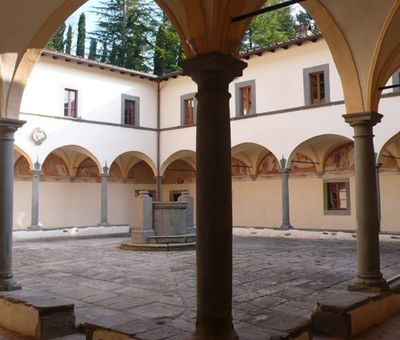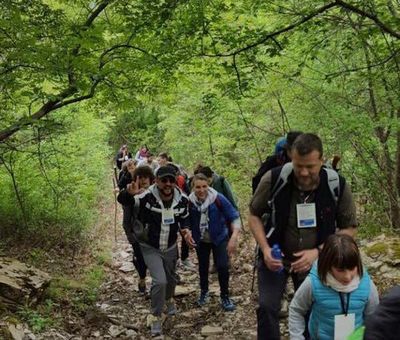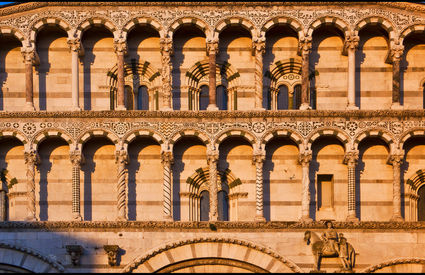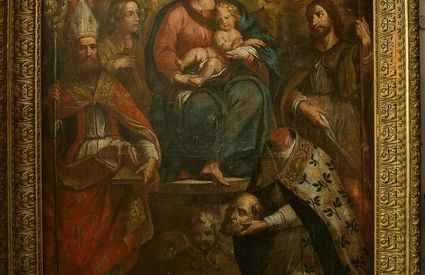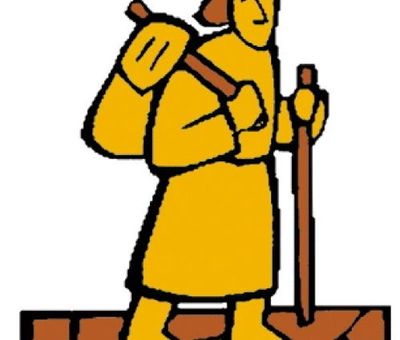Madonna with Child and Saints
The 17th century frame is splendidly inlaid, austere and majestic. The oil on canvas work, carried out during the 17th century, is attributed to a painter with origins in the Valle del Serchio, Baccio Ciarpi, and is titled “Madonna with Child and Saints”. The work, which comes from an old church in the upper Valle del Rosaro, is held in a Fivizzano museum and has a surprising characteristic: it somehow manages to “speak” to those who carefully observe it.
Streets and wayfarers
You have to keep in mind that the city of Fivizzano is found along the Via del Volto Santo, an ancient variant of the Via Francigena, one of the routes that led western Europe—particularly France—to Rome. The roads are connected to pilgrimages and, through a document from the Archbishop Sigeric of Canterbury, which described the route from Rome to Canterbury, we know a witness and the stops of what would become the most important of the routes to Rome: the Via Francigena. The Volto Santo is a similarly ancient road and crosses two evocative regions—the Luigiana and the Garfagnana, and in ten stops from from Passo della Cisa on Monte Bardone it leads to the city of Lucca, where the Cathedral of San Martino holds a wooden crucifix that was at the center of a widespread form of worship…
The Volto Santo’s accomplices
This last hypothesis is pretty intriguing for scholars and visiors who pass through Fivizzano to see (and to “listen” to) the painting by Baccio Ciarpi. The iconography of representation is extraordinary: the saints are all connected to the pilgrimage of the Volto Santo.
The work is a true masterpiece, which unfortunately shows its age and needs a restoration to be brought back to its former splendor. Because really, it’s future generations to whom this painting will have to continue to “talk” – for many more centuries.


